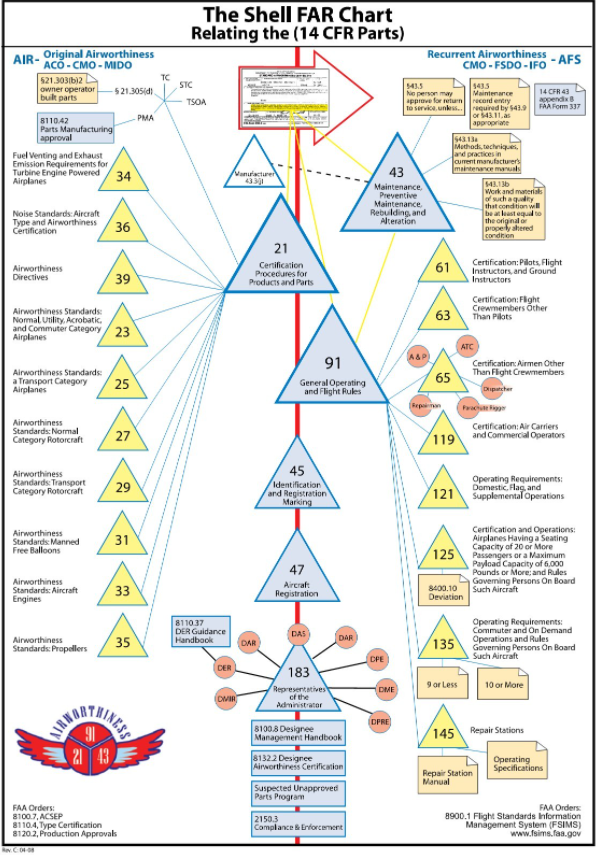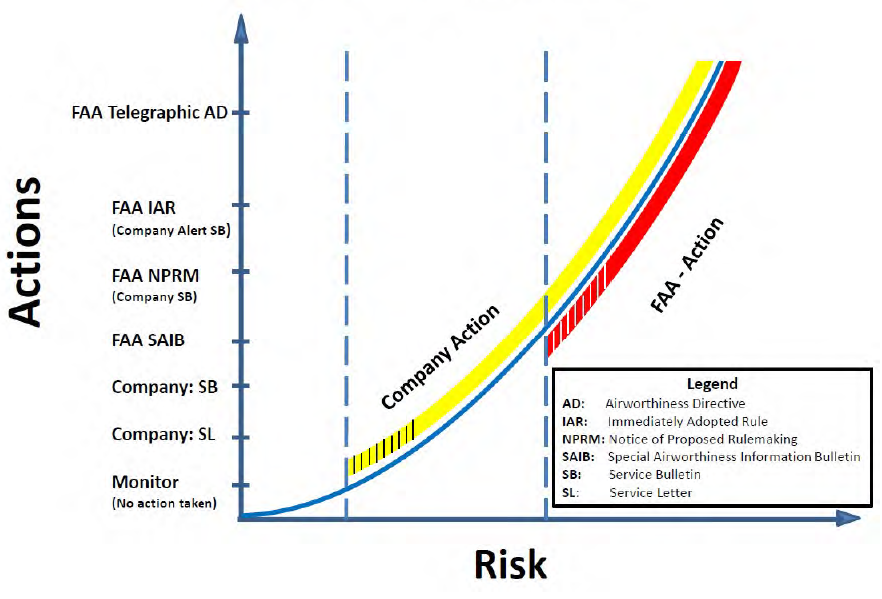Leeham News and Analysis
There's more to real news than a news release.
Bjorn’s Corner: The challenges of airliner development. Part 24. Parallel Activities
October 8, 2021, ©. Leeham News: Last week, we described how we conduct the Certification Flight Test together with the Regulator.
Before we describe our path to completion of our flight test program, we need to pause for a minute and discuss some of the other parallel activities that need to come together prior to issues of Type Certificate and roll out of production aircraft.
In article 3 you’ll recall we reviewed the breadth of regulatory involvement in aircraft development. While the work on the design and initial airworthiness (on the left in the chart below) is critical, it’s not the only set of rules we need to be working with if we want to achieve a successful Entry Into Service (EIS) of the aircraft.
In Part 21 of our series we already discussed the preparation of the production system. In the next few articles, we’ll be discussing three additional areas of work that we’re engaged in that must all come together at the program’s completion:

Figure 1. The Wymann Shell FAR Chart explains how 14 CFR Parts relate to each other. Source: FAA. Click to read easier.
The FAR chart
The chart in Figure 1 is practical as it shows how different Parts under 14 CFR (Title 14 Code of Federal Regulations) are related. The left-hand side shows the Parts that handle the Original Airworthiness, that is the Type and Production Certificates, and the right-hand side the Recurrent Airworthiness, which is how to ensure the aircraft stays safe when in operation.
FAA statistics show that the right-hand side, Recurrent Airworthiness, is more a cause for aircraft accidents than the left-hand side, Type and Production Certificates. The attention today is therefore on measures to improve operational safety.
During aircraft development we have to work three areas to satisfy the requirements FAA has for Recurrent Airworthiness:
I. Continued Operational Safety
The authorities typically recognize this (not Type Certification) as their primary, most important, mandate. Once the aircraft is in the hands of the operator, how do we ensure design and manufacturing issues are discovered and corrected, the assumptions we used during the certification process hold up in practice, and the aircraft is used and maintained in a manner that ensures its continued airworthiness.
This is done through:
Safety Monitoring and Reporting (14 CFR 21.3, 14 CFR Part 39)
As a holder of the type certificate, we’re responsible to monitor in-service issues. If those issues are significant enough we may have to issue Service Bulletins (Figure 2) to inform the impacted operators. Even higher risk issues may drive Airworthiness Directives from the authority. Prior to EIS, we’ll need a system in place to manage this.

Figure 2. A graph showing how an OEM and FAA surveys the operation of an aircraft and take action. Source: Boeing.
Instructions for Continued Airworthiness (14 CFR 23.1529)
The aircraft is airworthy when it rolls out of the factory but it needs to keep this condition for its 25 years or longer productive life. How this is done is contained in our Instructions for Continued Airworthiness (ICA). A lot of these instructions are maintenance documents, but there is more to it.
II. Operational Preparedness
In order for our airplane to be useful to the customer, we must prepare its operations. The root of this operational preparedness is described in Part 91, the general operating and flight rules. This means not only designing the airplane to meet the design rules construed from its intended use in Part 135 (Commuter) and/or Part 121 (Airline) operations, it also means preparing items such as:
Pilot (and crew) Training (14 CFR Parts 61, 63)
Establishing a pilot training program for our new aircraft type can take a significant amount of time and effort. As we produce a large aircraft (>12,500 lbs as defined by 14 CFR 1.1) and as we intend for its use under Parts 135 and 121 (for the US), we need to establish an aircraft type rating and pilots must be trained & licensed to fly our aircraft prior to in-service flying.
Simulator Qualification (14 CFR Part 60)
To streamline EIS, we develop a full flight simulator for use in the above training. This means the simulator must develop to behave like the real aircraft. All aspects of the human-machine interface, the simulation of systems behavior including in abnormal conditions and the aircraft’s aerodynamic behavior have to be correct.
III. Service Readiness
For service readiness, we produce Instructions for Continued Airworthiness, ICAs. The bulk of the ICAs are maintenance instructions around Continued Airworthiness, but how do we ensure maintenance is done by qualified personnel, through qualified organizations, and that larger alterations or repairs outside the scope of our ICAs are properly done?
As important for the customer, how do we, the OEM, ensure their repairs, maintenance, and part replacements are done in a timely manner? This is about service readiness, and the regulatory aspects are covered by:
Maintenance & Alterations (14 CFR Part 43)
Repair Stations (14 CFR Part 145)
In the next article, we’ll discuss Safety Monitoring and Reporting in more detail.



Big thank you for writing this Bjorn, its amazing to see the large amount of work that goes into commercial aircraft.
I do apologize if I am little off topic, and also if I missed this in one of the prior articles…
I work in the medical field, and there has been a proliferation of third party quality systems in recent years. (see for example https://www.greenlight.guru, or an overview here https://www.capterra.com/sem-compare/quality-management-software/). The vendors behind these claim they can save you years when compared to implementing your own from scratch.
Is there something similar available in aviation? If so, any idea how helpful these are?
That is a good questions. I do know of one mfg in my area of work (former) that had a diesel engine designed for them by (Rocaro I think) and the mfg site setup by them initially.
In their case, they had not made diesel engines before.
It seems aircrat might fall into that new ones are unusual and if not a mfg already, you would need outside help a lot.
Mitsubishi failed pretty badly in that regard (civilian side) with the Space Jet though I think they hired a new management team in the US before it folded.
I think you’ll find every manufacturer has had serious problems during certification ( or after after problems were hidden during certification).
The Spacejet program has been paused not folded. Not unlike Boeing’s MMA , but at a different stage of course.
The statements from Mitsubishi are that its paused, but the reality is it is a dead program.
They had the Cert issues handled, but they completely missed on others.
There were three huge problems with the program as well as sub set issues.
Mitsubishi is not a low cost producer or in a low cost labor market (Embraer has them beat there and they have dabbled in China)
The regional jet class is a small market. You are not going to make the big bucks there.
Mitsubishi gambled that the scope clauses were gong to come off (as did Embraer with the E2). Embraer had the E1 to fall back on, Mitsubishi had to start all over again.
Simply not worth it. What they do with the CJ pickup is anyone’s guess.
My opinion is the CJ program was a knee jerk reaction that never was going to fly as it was pointed to a distribution network for the Space Jet that is not going to come.
Down the road you may see a C series type come out of a Boeing/Mitsubishi/Japan collaboration but I doubt it.
Very little of Embraers airliners are made in Brazil, its top tier suppliers in many high wage countries.( One structure is made the other side to Boeing in Everett)
Its the designer integrator that Boeing tried to be. Japan has very generous subsidies of course and it was a national program to move higher up the airliner value chain. They have factorys built for final assembly for both airframe and the engine.
The Spacejet is otherwise an ideal design for the market its aimed at. The planes built are the larger model not the scope compliant smaller model- of which there still is no real competitor, the E2-175 being too heavy.
Its hard to get real intell out of Japan because of the way their
financial media operates as a closed club
Duke:
Quote from a Leeham report:
“MHI’s SpaceJet development has been “suspended,” but nobody believes it will be restarted”
I am not into Embraers supply chain, I would assume a lot of tech stuff is imported and the frames assembled there.
That said I remember some fuselage (wing?) stuff from China, brought back? as well as assembly if not build of business jets in the US.
Japan regardless is not the place you make competitive aircraft.
Bjorn:
For this type aircraft would they develop a full motion Simulator?
Hi Transworld,
It’s a border case. Full motion meaning with hydraulics moving a cockpit etc, perhaps not. But with a good visual system, definitely. One has found that the eyes are a very dominant sensor and if you can give the pilots a good visual representation of the state of the aircraft it goes a long way to make the simulation immersive.
I have flown several full-motion simulators with crappy visual systems, and static simulators with good visual systems. I prefer the latter between these two types.
Makes good sense.
I got a flight in a CAE MD-11 Simulator. I about had a heart attack when they put it to the Anchorage approach off Fire Island but just sitting in air like a helicopter.
The visuals all screamed this IS NOT RIGHT.
Ironic side note was that the projectors they started with were very heat sensitive. The building used the cooling fan air flow to heat the Sim Bay with the grills pointed right at the projectors. We had other heat for keeping the front windows clear (you can see it from the road so it was a PR thing) so I turned off the heating coil in that fan so the fan control processor never tried to dump heat on them up there.
Who develops the simulator? The air-framer or the simulator company?
And how is this done? Is the simulator company provided with a “dummy” cockpit and a full sensor data set from the flight envelope from which they program the motion and visuals for the simulator?
Specialized companies provide the Simulator.
Yes the Simulator is programmed per the flight data. A level D is 100% Fidelity (true to the sounds as well as handling).
In theory you could run someone through on Simulators to a First officer position.
I don’t know if the Sim maker buys the cockpit from aircraft mfg, they do put their own enclosure around it that has the supporting system like the Visual Projectors and the entire underside is a mass of electronics.
FAA certifies them for Flight Training.